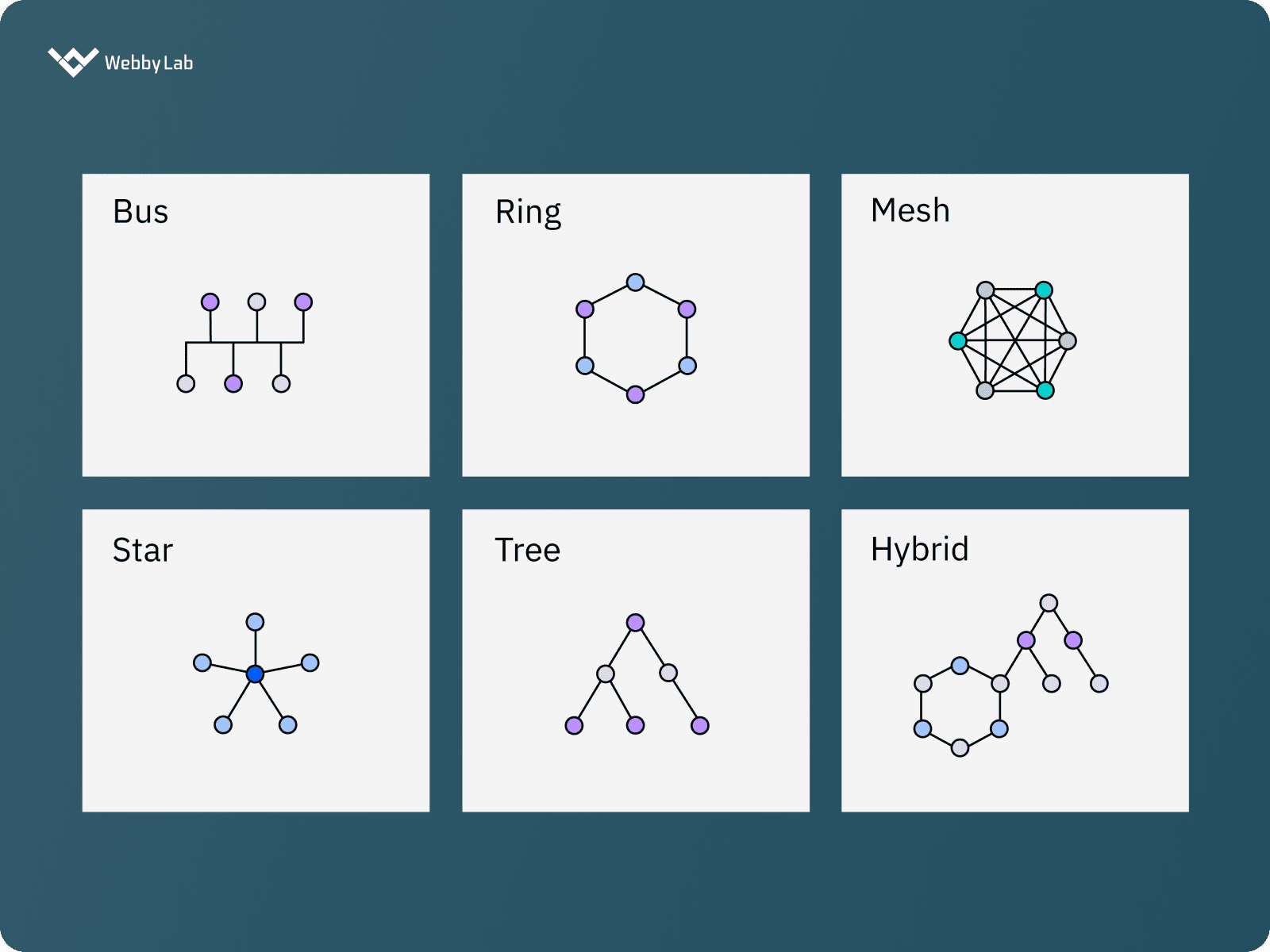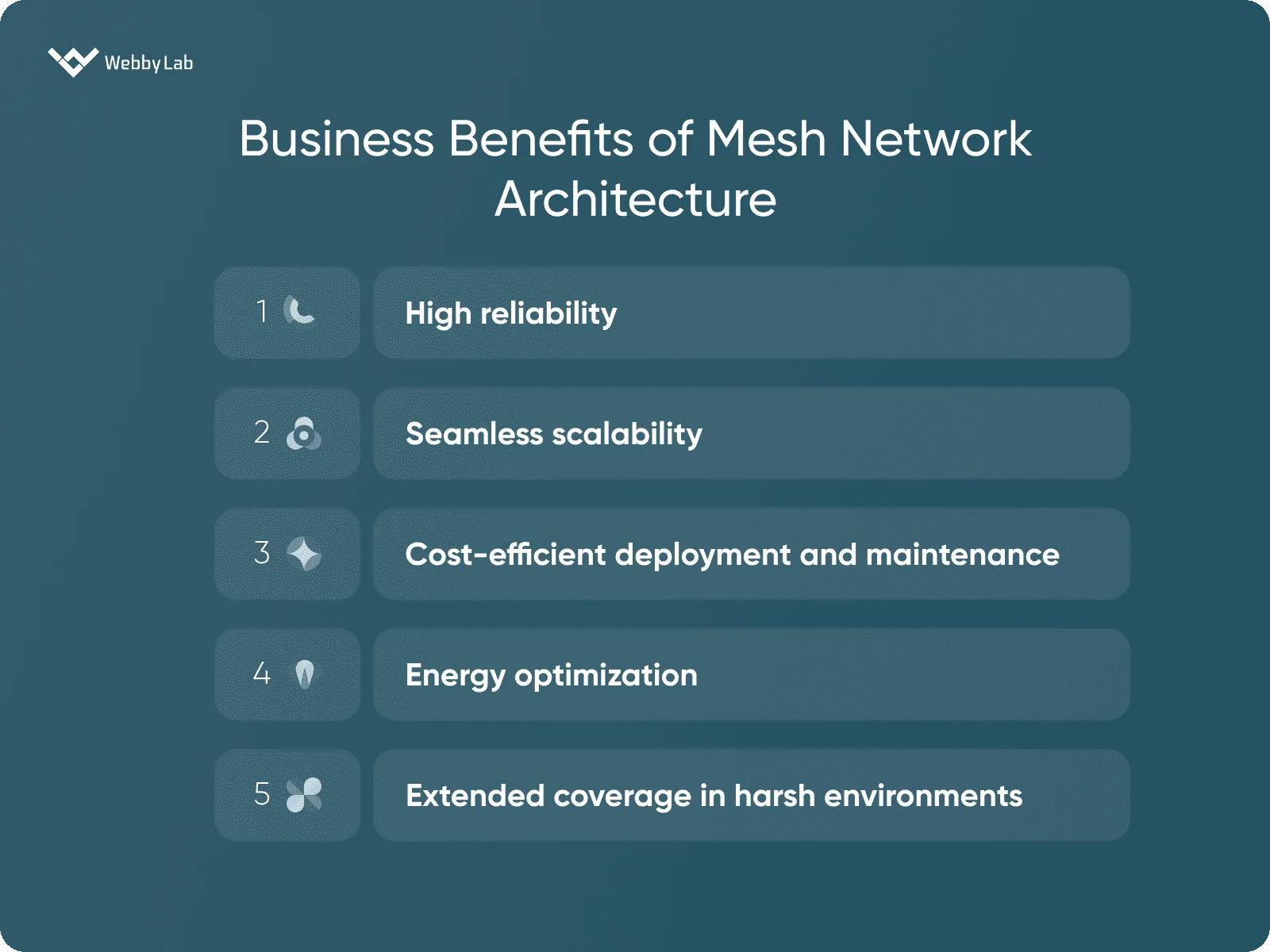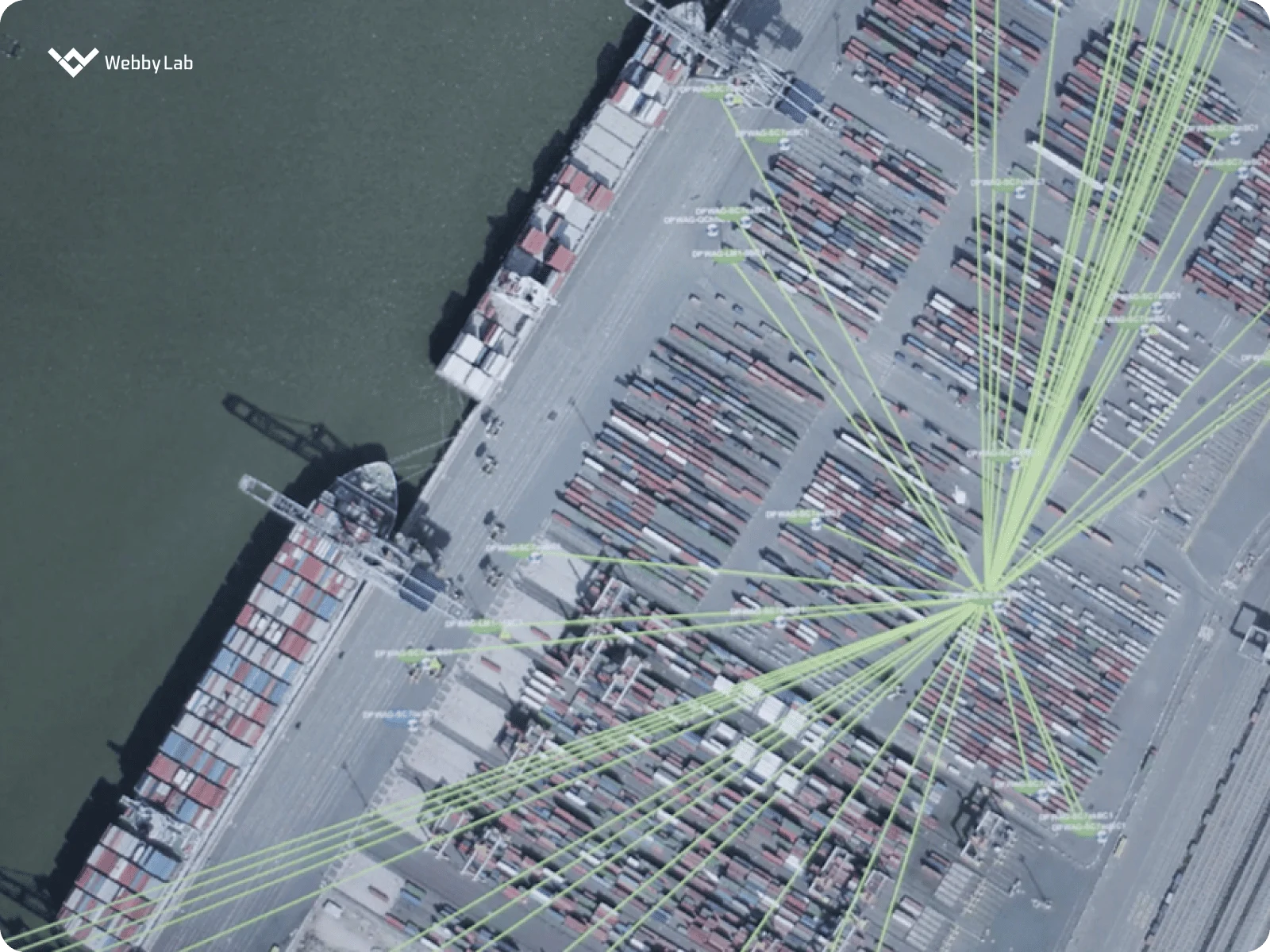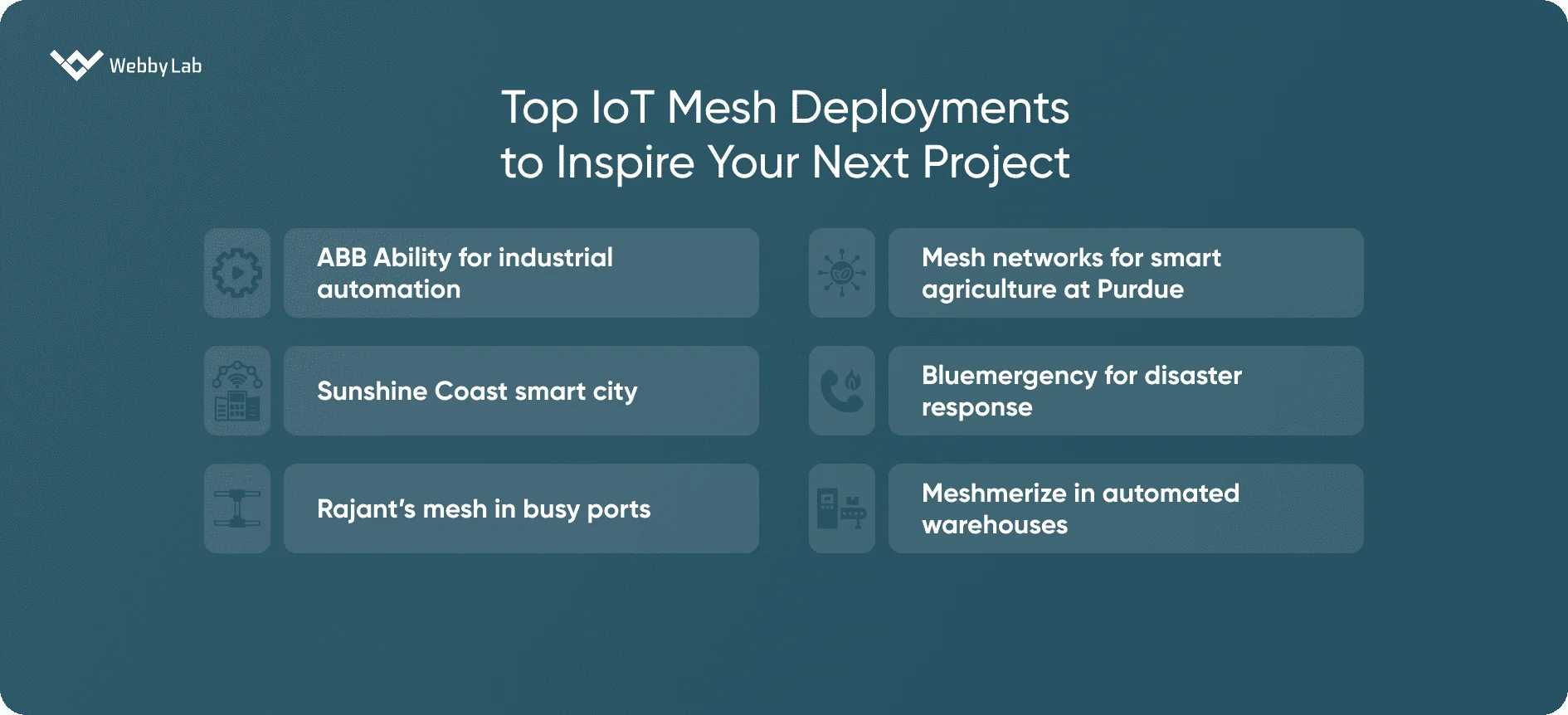Why IoT Mesh Networks Are the Backbone of Scalable, Resilient Systems
Written by:

Kostiantyn Oliynyk
Head of IoT at Webbylab
With a robust academic background in Telecommunication Systems Engineering, I apply my knowledge to lead innovations in the IoT domain. Starting as the first team member in the newly formed IoT department at WebbyLab, I've spearheaded its growth, fostering the expansion into embedded and hardware development alongside our core software projects. My dedication lies in pushing the boundaries of IoT technology, fostering a culture of innovation and excellence that profoundly impacts our clients' operational success.
We’re seeing big changes in the way businesses use IoT mesh network protocols. Thread is gaining traction in smart buildings for its secure, low-power performance, while Bluetooth Mesh networking is becoming a go-to for retail and lighting. On top of that, self-healing mesh network technologies are getting smarter with cloud and AI integration, plus better OTA updates.
If you’re not ready to use an IoT mesh network, there are other options. Consider mesh vs star topology with LoRaWAN or NB-IoT or classic setups with Wi-Fi or Ethernet. You can also try Sigfox-based solutions, ZigBee in non-mesh configurations, or even Z-Wave in tree topologies.
When you choose IoT mesh technology, you’re investing in a system that can easily adapt and scale. Unlike centralized networks, a mesh network reroutes data on the go, so even if one node fails, everything keeps working smoothly.
The real technical challenge with IoT mesh networks is that they can get slower and less efficient as more devices are added. Each message may hop through multiple nodes — adding latency and routing overhead. So while mesh is great for resilience, it needs smart architecture design to avoid performance bottlenecks as your network gets larger.
Yes! A mesh network can be integrated with AI. In fact, this kind of integration allows for adaptive performance tuning, predictive maintenance, and smarter routing. Emerging techs like neural mesh networks even enable distributed machine learning across nodes.













